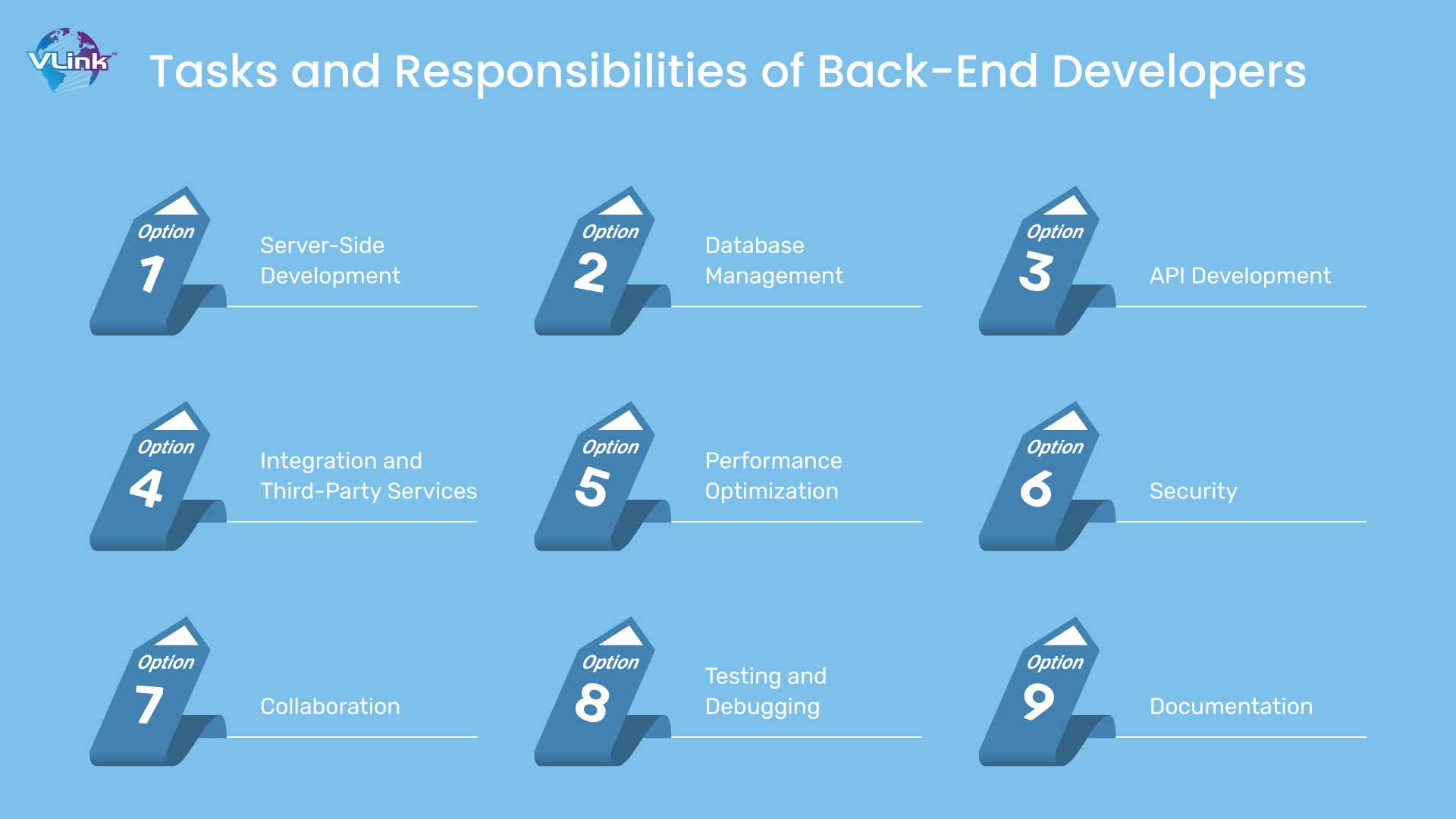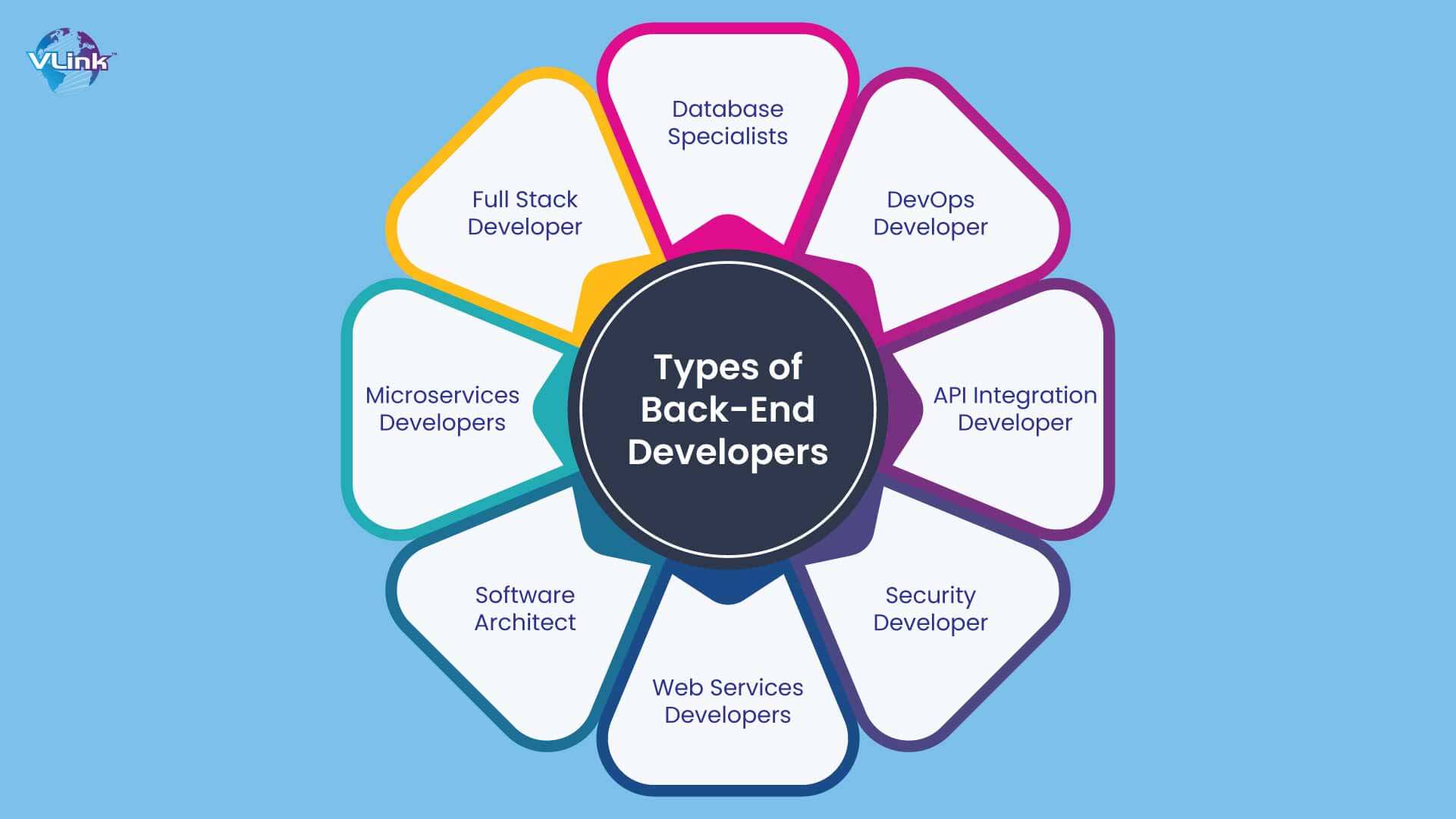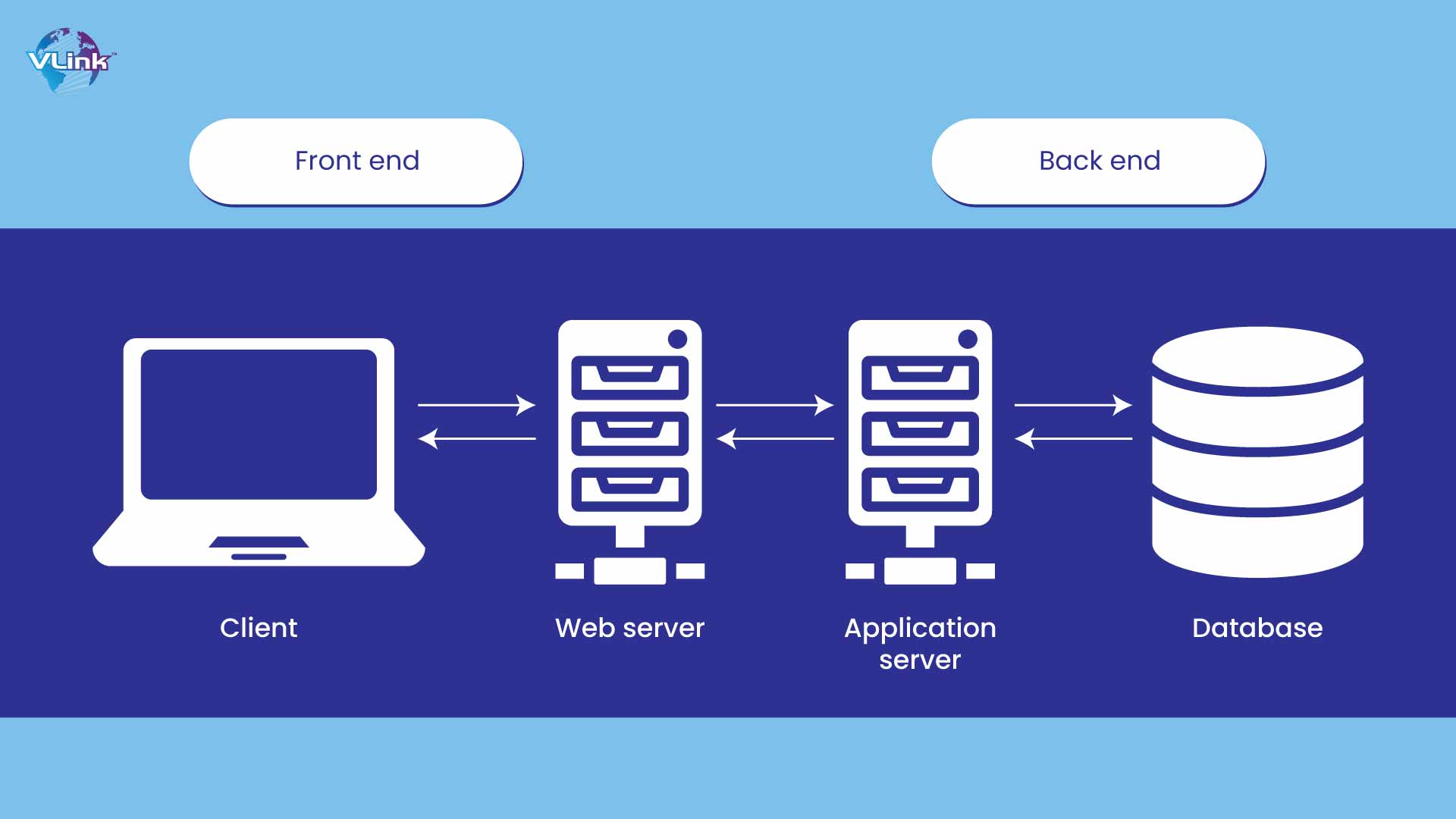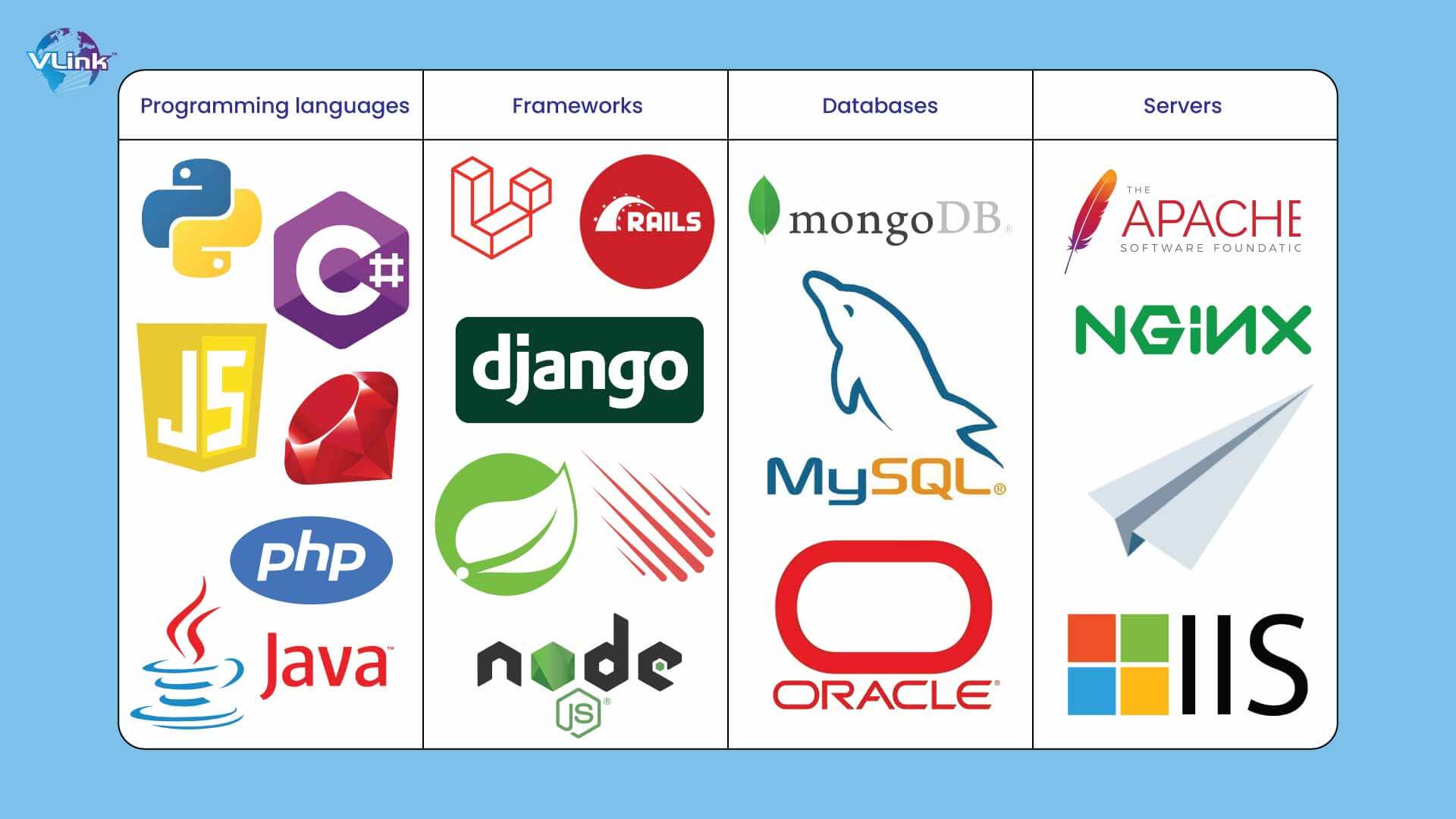Ever wonder what happens behind the scenes of a website? How exactly do website’s functionalities work? A Backend Developer is the magician behind all of this. They're the architects creating seamless transitions and safeguarding your data's journey.
In today's highly digitized world, the demand for skilled backend developers is skyrocketing and crucial to any tech team.
According to the U.S. Bureau of Labor Statistics, employment for web developers, including backend developers, is predicted to grow by 13% from 2018 to 2028.
LinkedIn's survey recognized backend development as one of the top 10 most valuable skill sets in today's job market.
If you're into web development, you've probably encountered the term "backend developer.” In this blog, we will explore what a backend developer does, their roles, responsibilities, skills, and tools.
Who are Back-End Developers?
Back-end developers are specialized software engineers who focus on the server side of web app development. They are responsible for the underlying logic, databases, server configurations, and application programming interfaces (APIs) that drive the functionality of websites and applications.
What Does a Back-End Developer Do?
Back-end developers ensure that a website or app's behind-the-scenes aspects run smoothly. They utilize their technical expertise and problem-solving abilities to develop systems that manage data and execute various tasks. Additionally, they collaborate effectively with front-end developers to construct the complete framework of the website or app.
Tasks and Responsibilities of Back-End Developers

The duties and responsibilities of a back-end developer depend on the specific project, company, and team structure, but generally include:
#1 - Server-Side Development
Crafting server-side code to handle front-end requests, manage data, and perform necessary computations. It involves using programming languages like Python, Java, Ruby, PHP, or Node.js, and trending frameworks for app development such as Django, Spring Boot, Ruby on Rails, Laravel, or Express.js.
#2 - Database Management
Designing and maintaining databases for efficient data storage and management. Tasks include creating database schemas, writing queries, optimizing performance, and ensuring data integrity and security.
#3 - API Development
Design, implement, and maintain APIs (Application Programming Interfaces) to facilitate communication between application components or with external systems. It involves defining endpoints, handling requests and responses, and ensuring API security and scalability.
#4 - Integration and Third-Party Services
Integrating third-party services, libraries, or APIs as needed. It could include payment gateways, authentication services, cloud storage, or other external systems.
#5 - Performance Optimization
Identifying and resolving performance bottlenecks in back-end code, database queries, or server configurations to enhance application speed and efficiency.
#6 - Security
Implementing measures to protect the application and its data from vulnerabilities, threats, and unauthorized access. It includes setting up authentication and authorization mechanisms, encrypting data, and adhering to secure coding best practices.
#7 - Collaboration
Hire front-end developers, designers, project managers, and other stakeholders to understand requirements, define technical solutions, and ensure project success. It involves participating in meetings, providing technical guidance, and reviewing code.
#8 - Testing and Debugging
Writing unit tests, integration tests, and end-to-end tests to ensure back-end code reliability and stability. Debugging and troubleshooting issues during development, testing, or production.
#9 - Documentation
Writing and maintaining documentation for the back-end codebase, including code comments, API documentation, and technical guides for developers or team members.
Must-Have Skills of Back-End Developers
Here's a table listing the must-have technical and soft skills of backend developers:
Technical Skills Description
Programming Languages Proficiency in Java, Python, Ruby, PHP, Node.js (JavaScript), C#.
Database Management Expertise in SQL (MySQL, PostgreSQL, SQL Server) and NoSQL (MongoDB, Cassandra, Redis).
Frameworks Experience with Spring Boot (Java), Django/Flask (Python), Ruby on Rails (Ruby), Express.js (Node.js), ASP.NET (C#).
APIs and Web Services Designing and consuming RESTful APIs, working with GraphQL and SOAP for legacy systems.
Version Control Proficiency with Git and platforms like GitHub, GitLab, and Bitbucket.
Server Management Skills in managing Linux/Unix servers, Windows Server, and configuring Nginx/Apache.
Containerization and Orchestration Docker for containerization & Kubernetes for orchestration.
Cloud Services Knowledge of AWS, Azure, and Google Cloud Platform (GCP).
Microservices Architecture Understanding and implementing microservices.
Testing and Debugging Proficiency in unit testing (JUnit, pytest, Mocha), integration testing, and debugging tools.
Security Implementing security best practices (OWASP), authentication, and authorization (OAuth, JWT).
Soft Skills Description
Problem-solving: Analyzing complex issues and designing solutions.
Communication: Clear communication with team members and stakeholders, explaining technical details to non-technical stakeholders.
Teamwork Collaborating with cross-functional teams (front-end developers, UI/UX designers, product managers, QA engineers).
Adaptability Easy to adapt to latest technologies and methodologies.
Attention to Detail Precision in coding and debugging for high-quality output.
Creativity and Innovation: Bringing new ideas and innovative solutions.
Patience and Persistence Persevering in troubleshooting and solving complex problems.
Continuous Learning: Staying updated with industry trends and committing to constant self-improvement.
Project Management Understanding of project management principles and tools (JIRA, Trello).
What are the Different Types of Back-End Developers?
Here are different types of back-end developers:

#1 - Database Specialists: They craft the blueprints (schemas) and write the instructions (queries) to organize, optimize, and protect information.
#2 - DevOps Developer: They concentrate on automating and streamlining the procedures, bridging software development and IT operations. You can hire DevOps developers to streamline backend processes, ensure efficient collaboration, and optimize development for performance, reliability, and scalability.
#3 - API Integration Developer: API integration developers are experts in connecting various systems, applications, or services within a software ecosystem. Their role involves crafting, building, and managing APIs, middleware, and other integration solutions to facilitate smooth communication and data exchange among diverse systems.
#4 - Security Developer: They specialize in implementing security measures to protect web applications and data from vulnerabilities, threats, and unauthorized access. They incorporate authentication and authorization mechanisms, encryption, secure coding practices, and security testing to minimize risks and uphold compliance with security standards.
#5 - Web Services Developers: They focus on crafting and maintaining web services, APIs, and microservices that expose functionality to other applications or systems. They undertake tasks such as designing RESTful or SOAP APIs, managing requests and responses, and ensuring the services' interoperability and scalability.
#6 - Software Architect: Software architects design the overall structure and architecture of a software system, including both front-end and back-end components. Their duties involve:
- Outlining the system's high-level design.
- Selecting suitable technologies and frameworks.
- Instituting best practices and design patterns to steer development teams.
#7 - Microservices Developer: They design and develop microservices architectures, breaking down applications into more minor, independent services that communicate over a network.
#8 - Full-Stack Developer: They possess expertise in both front-end and back-end development, enabling them to handle all facets of web application development, including designing user interfaces, implementing server-side logic, and managing databases.
What's the Difference Between Front-End Developer vs. Back-End Developer?
Front-end and back-end development are two sides of the same coin when it comes to web development. Here's the breakdown:

Front-End Developer:
Focuses on the user interface (UI) and user experience (UX) of a website or web application.
Deals with what the users interact with directly: the layout, design, and interactivity of web pages.
Uses languages like HTML, CSS, and JavaScript to create visually appealing and functional interfaces.
Works closely with designers to implement their visual designs and ensure they are responsive and user-friendly across various devices and browsers.
Back-End Developer:
Concentrates on the server-side logic and database interactions of a website or web application.
It handles the behind-the-scenes functionality that powers the front end, such as database operations, user authentication, and server configuration.
Utilizes programming languages and frameworks like Python, Ruby, Java, PHP, Node.js, and databases like MySQL, MongoDB, PostgreSQL, etc.
Ensures that the server-side code is secure, scalable, and efficient, handling tasks like data validation, authentication, authorization, and business logic.
In summary, while front-end developers create the visual and interactive elements that users see and interact with, back-end developers build and maintain the infrastructure that supports those front-end components, ensuring the entire system works smoothly and securely.
What Tools Do Back-End Developers Use?
Tools back-end developers use is shown in below image:

By now, you’re familiar with the basics of all the things that a backend developer does. Great! So, if you are planning to hire back-end developers for your project, go with a trustworthy IT staffing company in the United States.
Hire Back-End Developers from VLink Within 48 Hours!
Hire top-tier back-end developers swiftly from VLink! We streamline the hiring process to secure your ideal candidate within 48 hours. Our skilled professionals excel in server-side logic, database management, and security protocols.
Elevate your web development projects with our rapid and reliable staff augmentation services. Partner with VLink today to hire the right fit for your project.
Frequently Asked Questions
Back-end development involves creating and managing the server-side components of web applications. It includes database interactions, server logic, and APIs to ensure seamless data flow and functionality. Back-end developers handle everything behind the scenes to support the front end, ensuring applications run smoothly and efficiently.
To hire back-end developers, visit VLink’s website, specify your requirements, choose the appropriate hiring model, and conduct interviews with shortlisted candidates. Once you've selected the best fit, start the onboarding process to integrate the developers into your project efficiently.
The cost to hire back-end developers varies widely based on experience, location, and project complexity, typically ranging from $25 to $150 per hour. For specific pricing, it's best to consult with hiring platforms or agencies directly.
Back-end developers and engineers share similar technical skills but have distinct responsibilities.
A back-end developer is like a teacher, concentrating on specific applications and programs and collaborating with teams to validate their design methods.
On the other hand, a back-end engineer resembles a school principal, crafting overarching strategies and guiding the bigger picture.














